Bread #22 in the BBA Challenge is Pain de Campagne, a French country bread that utilizes a large percentage of Pâte Fermentée (pre-ferment) to enhance the flavor and texture of the bread. It is similar to French Baguette dough, but includes a small percentage of whole grain (whole wheat, pumpernickel rye, white rye, or cornmeal) which gives the bread a brownish-gold, country-style crust and distinguishes it from white French bread.
There are many shapes that can be made from this dough. Some common shapes are: fendu, épi, couronne, and auvergnat. Since the dough makes three loaves, I made a boule, a couronne, and an épi.
I’m submitting these loaves to this week’s YeastSpotting bread roundup, hosted by Susan of Wild Yeast! Please visit Wild Yeast to view all of the lovely breads in the roundup.
While you’re at it, why not try some of these other French Bread Recipes.
Pain de Campagne
Makes
: 3 Loaves
Ingredients:
- 3 cups (16 ounces) Pâte Fermentée
- 1 3/4 cups (8 ounces) unbleached bread flour
- 1/3 cup (1.5 ounces) whole-wheat or rye flour (or a combination)
- 3/4 teaspoon (.19 ounce) salt
- 1 teaspoon (.11 ounce) instant yeast
- 3/4 cup (6 ounces) water, lukewarm
- Semolina flour or cornmeal for dusting
Directions:
Making the Pâte Fermentée
For detailed instructions on making the Pâte Fermentée, refer to the August 16th post on French Baguettes
Making the Dough
Cover the dough with plastic wrap and let it sit on the counter for an hour to take off the chill. This is what the pre-ferment looks like after sitting on the counter for an hour.
Stir together the flours, salt, yeast, and Pâte Fermentée pieces.
Add the water and stir until everything comes together and makes a coarse ball. I used the Danish dough whisk to mix the dough. It works really well. Adjust the flour or water if necessary so that the dough is neither too sticky nor too stiff.
Transfer the dough to a counter sprinkled with flour.
Knead for about 10 minutes or until the dough is soft and pliable, tacky but not sticky, and all the pre-ferment is evenly incorporated. This is the fun part! The dough feels wonderful!
Fermenting the Dough
Shaping the Dough
Gently remove the dough from the bowl, and transfer it to a counter lightly sprinkled with flour. Try to degas it as little as possible.
Divide the dough into three or more pieces by cutting it with a pastry scraper or serrated knife. Take care not to degas it.
To create surface tension, stretch the outside of the dough into an oblong, being careful not to squeeze out the gas trapped in the dough.
Repeat this stretching motion, bringing the opposite ends together to make a ball. Tighten the surface tension by pinching to seal the bottom of the dough where the creases converge. Set the boules aside for proofing or the rest for further shaping.
Shaping the Couronne
Take one of the boules and poke a hole in the center. Gently stretch it into a large, circular, doughnut like shape.
Lay it down on a counter sprinkled with flour.
Crease the four quadrants with a dowel or thin rolling pin. I didn’t have either of these tools so I used a wooden skewer.
Dust the cracks with flour to prevent them from sealing close. The skewer wasn’t quite heavy enough so the creases didn’t hold very well even after dusting them with flour.
Line baking sheets with parchment paper sprinkled with cornmeal or semolina flour. Place the boule and the couronne on parchment paper and set aside for proofing. Mist the dough with spray oil and loosely cover with plastic wrap.
Let the dough proof for about an hour or until the pieces are approximately 1 1/2 times their original size.
Making the Epi
Shape and proof the dough as for a baguette (page 74). You do this by creating a batard shape first (page 73), then stretching it out to a baguette shape. For detailed instructions on making baguettes, refer to the August 16th post on French Baguettes.
Proof the dough for about an hour, or until the pieces are approximately 1 1/2 times their original size.
Prepare the Oven for Hearth Baking
Prepare the oven for hearth baking as described on pages 91-94. Make sure to have an empty steam pan in place. Preheat the oven to 500 degrees. For more detailed instructions on hearth baking, refer to the October 5th post on Pain À l’Ancienne Baguettes.
Making Decorative Cuts in the Dough with Scissors
Use scissors to create interesting designs in the Boule just before baking. To make the cuts, hold the scissors at a sharp angle that is almost parallel to the loaf and make a series of snips.
Just before baking the epi, cut the dough with scissors at a sharp angle, nearly parallel to the loaf, cutting almost, but not quite, through to the bottom of the dough. The loaf has to stay connected. Swing the cut sections out and away from the loaf, spreading them as wide as possible from one another.
Baking the Loaves
Epis can be baked directly on the sheet pans.
For the other shapes, dust a peel or the back of a sheet pan with cornmeal and transfer the dough pieces to the peel or pan. Then, slide the loaves onto the baking stone. I opted to keep the dough on the parchment paper to make sure it didn’t stick. So I just slid the dough (along with the parchment paper) onto the baking stone.Bake according to the instructions on page 197. For detailed instructions on hearth baking, including using the steam pan and spraying the oven walls with water at 30-second intervals, refer to the October 5th post on Pain À l’Ancienne Baguettes.
Bake the loaves for 10 minutes, rotate for even baking, then continue to bake for 10 to 15 more minutes. The loaves should be a rich golden brown all around and should sound hollow when thumped on the bottom.
Cooling and Serving the Loaves
I didn’t get a picture of the crumb because I gave these breads away and didn’t want to mess them up. I brought the couronne to a friend’s house for dinner. It tasted wonderful dipped in olive oil and an herb mixture. The crumb was beautiful! You’ll just have to take my word for it.
The next bread in Bread Baker’s Apprentice Challenge, is Pane Siciliano. This is another bread that uses Pâte Fermentée.
Happy Baking!
Cathy
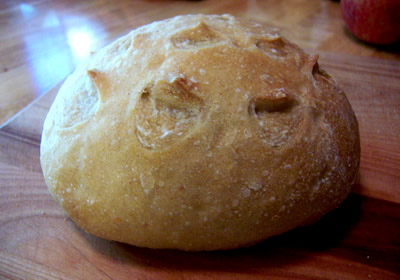
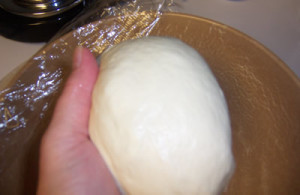
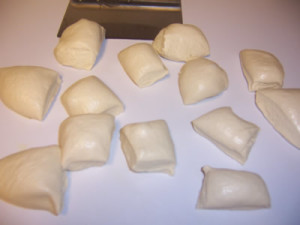
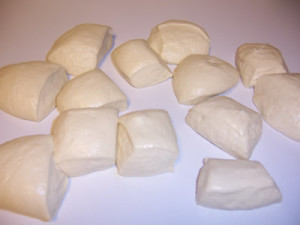
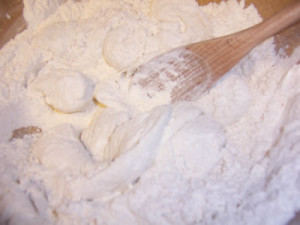
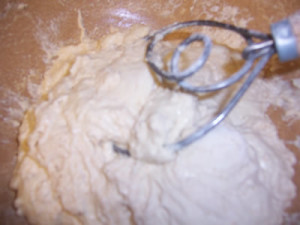
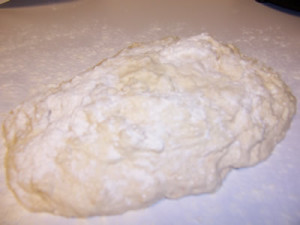
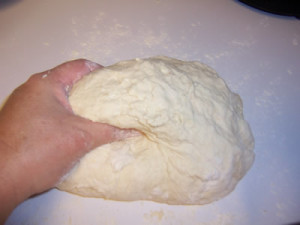
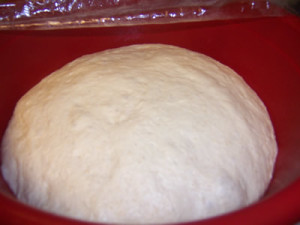
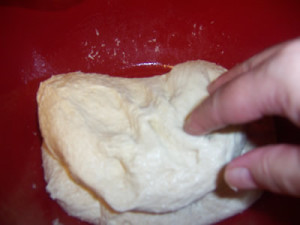
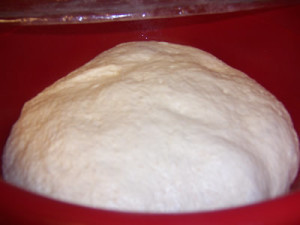
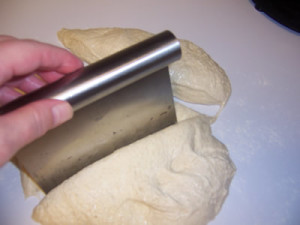
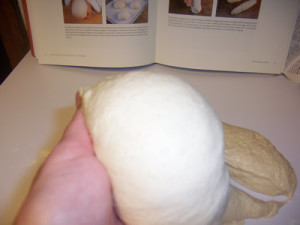
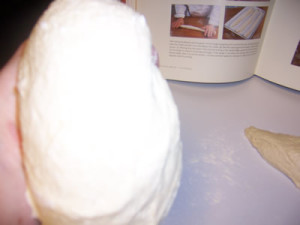
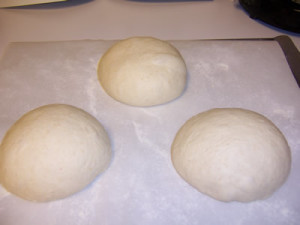
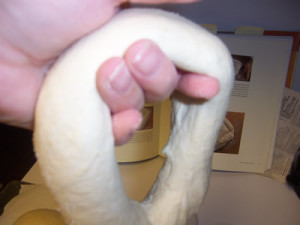
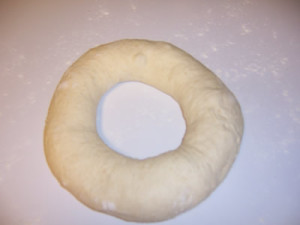
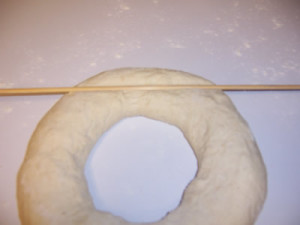
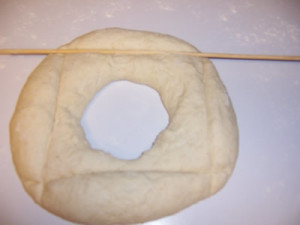
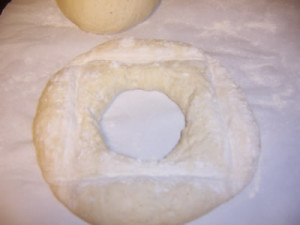
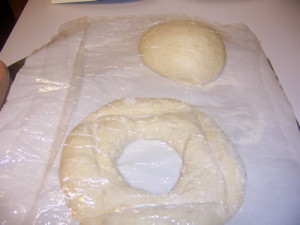
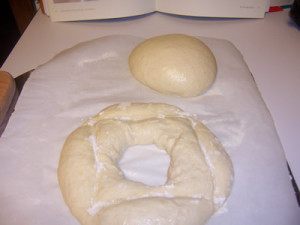
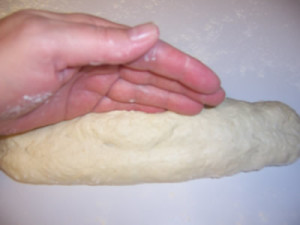
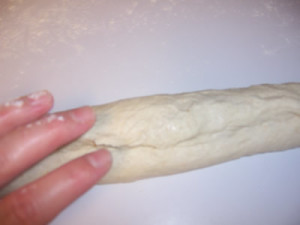
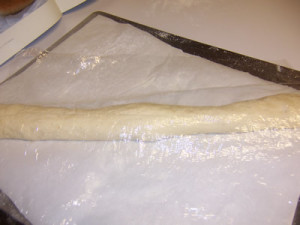
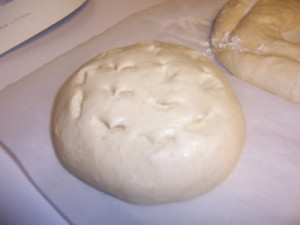
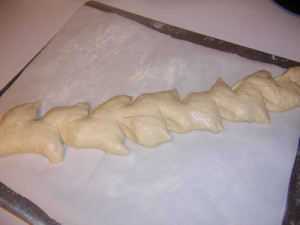
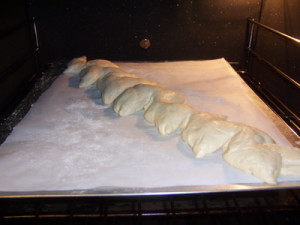
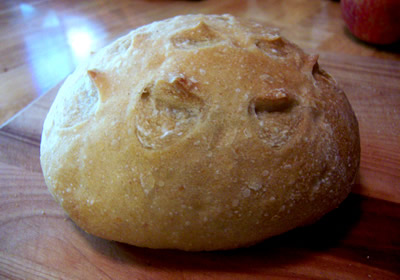
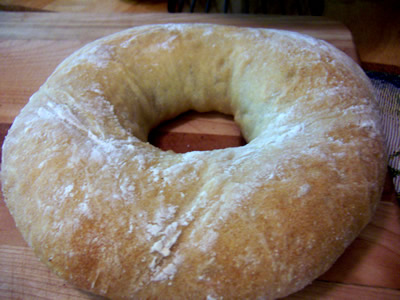
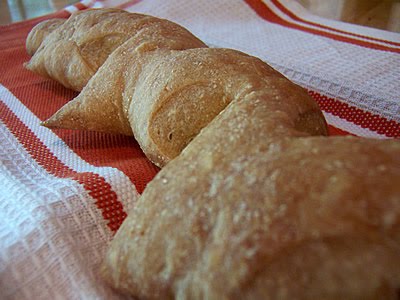
TeaLady says
Beautiful breads.
Slow and steady, but we will get there some day.
Cathy (breadexperience) says
Amen! Just 20 or so more breads to go and counting… Thanks!
noelsbread says
Lovely looking loaves, the Pain de Campagne was a fun bread I thought, delicious too!
Cathy (breadexperience) says
Thank you! The Pain de Campagne was fun! Although I could use a little more practice with the different shapes.
noelsbread says
Well, try the Auvergnat and Tabatière next time! They were really easy. So was the Fougasse, although I didn’t really make it quite how I wanted to. I still haven’t made a Couronne, need to do that. I’ve always liked the epi shape too. It took me a while to get the hang of the epi though, I would always cut it from the side rather than above. Keep making that beautiful bread!
Cathy (breadexperience) says
Thanks! Good idea! I especially like the Auvergnat. The Fougasse looks pretty cool as well. I’m still getting the hang of the epi. I just love all of these breads!
Frieda says
Beautiful breads…can’t wait till I get to this recipe~ On a side note, I clicked onto your pizza napolenta and got this post instead…would love to hear about your pizza experience~
Anonymous says
When ever I try this recipe or similar one the sides of my loaves ‘blow out’ presumably due to steam….. how does one prevent that?
Cathy W. says
By blowout, do you mean one side expands and bursts? Do you score your loaves before baking to give them room to expand?
If you are using a baking stone, it could also be that your baking stone doesn’t heat through evenly. Try rotating the loaves for even baking and see if that along with the scoring helps.
Anonymous says
Yes that is what I mean by blowout. I have tried scoring and having noticing having any effect what so ever. I may be doing it wrong. I do use a baking stone and you may be right about that.